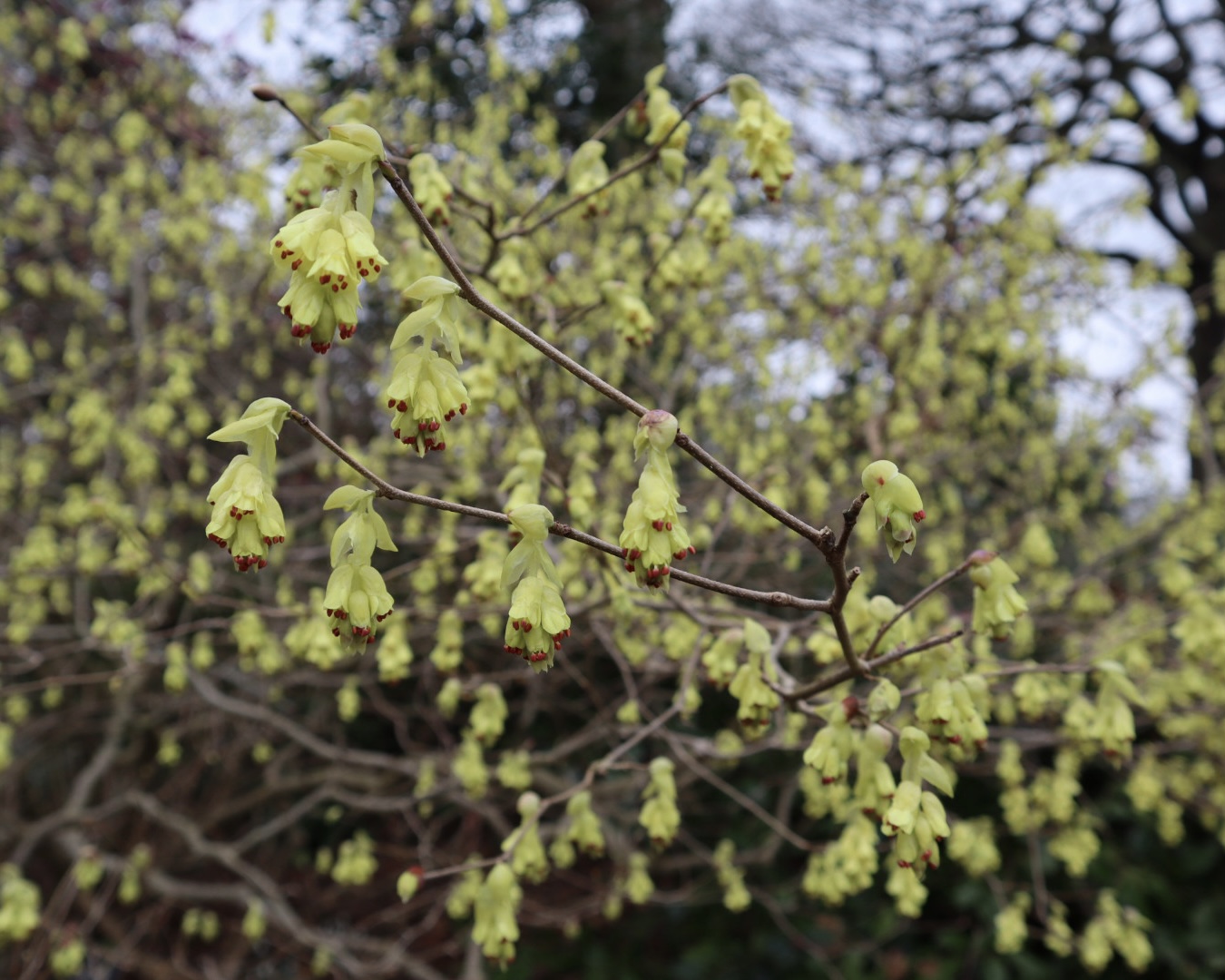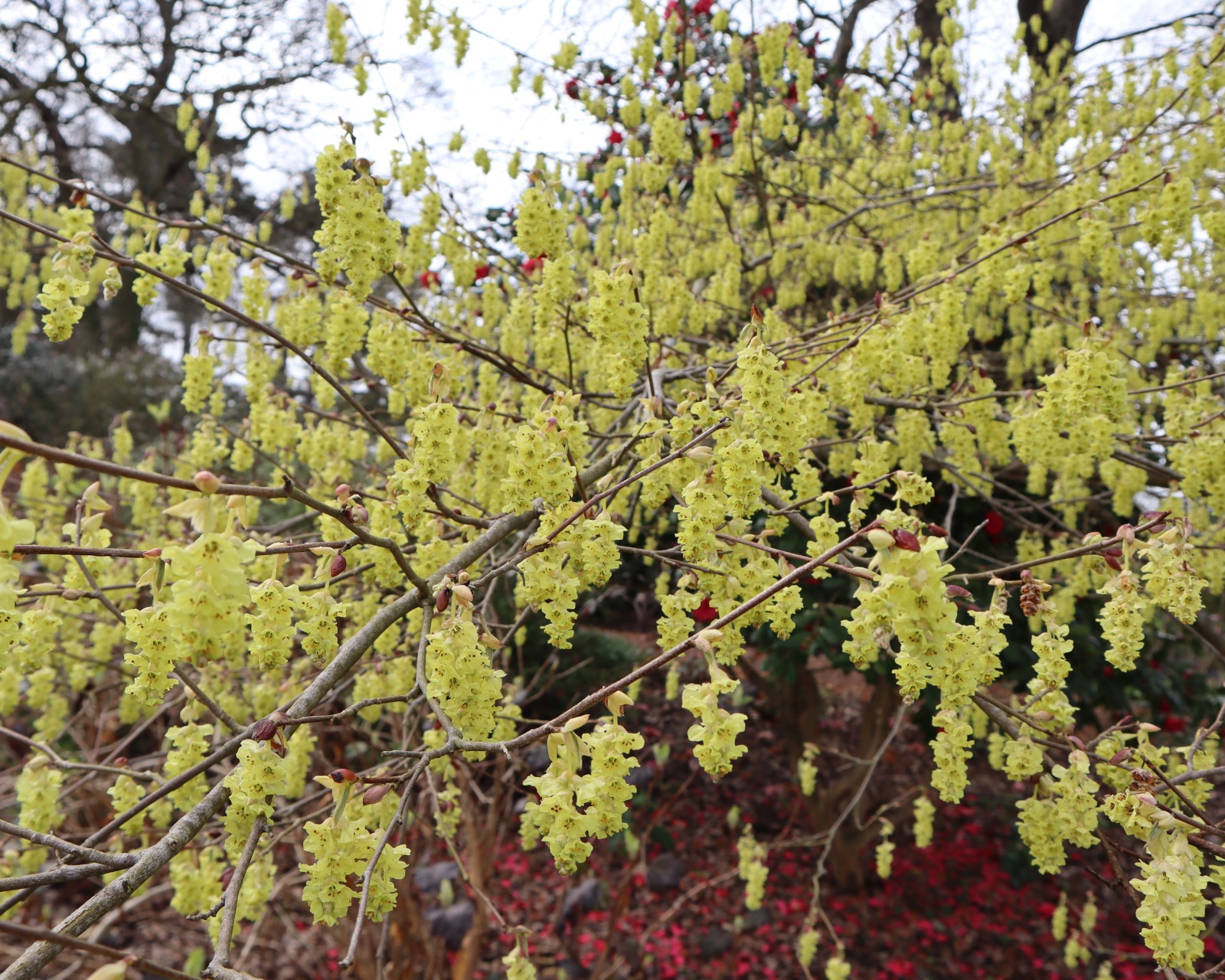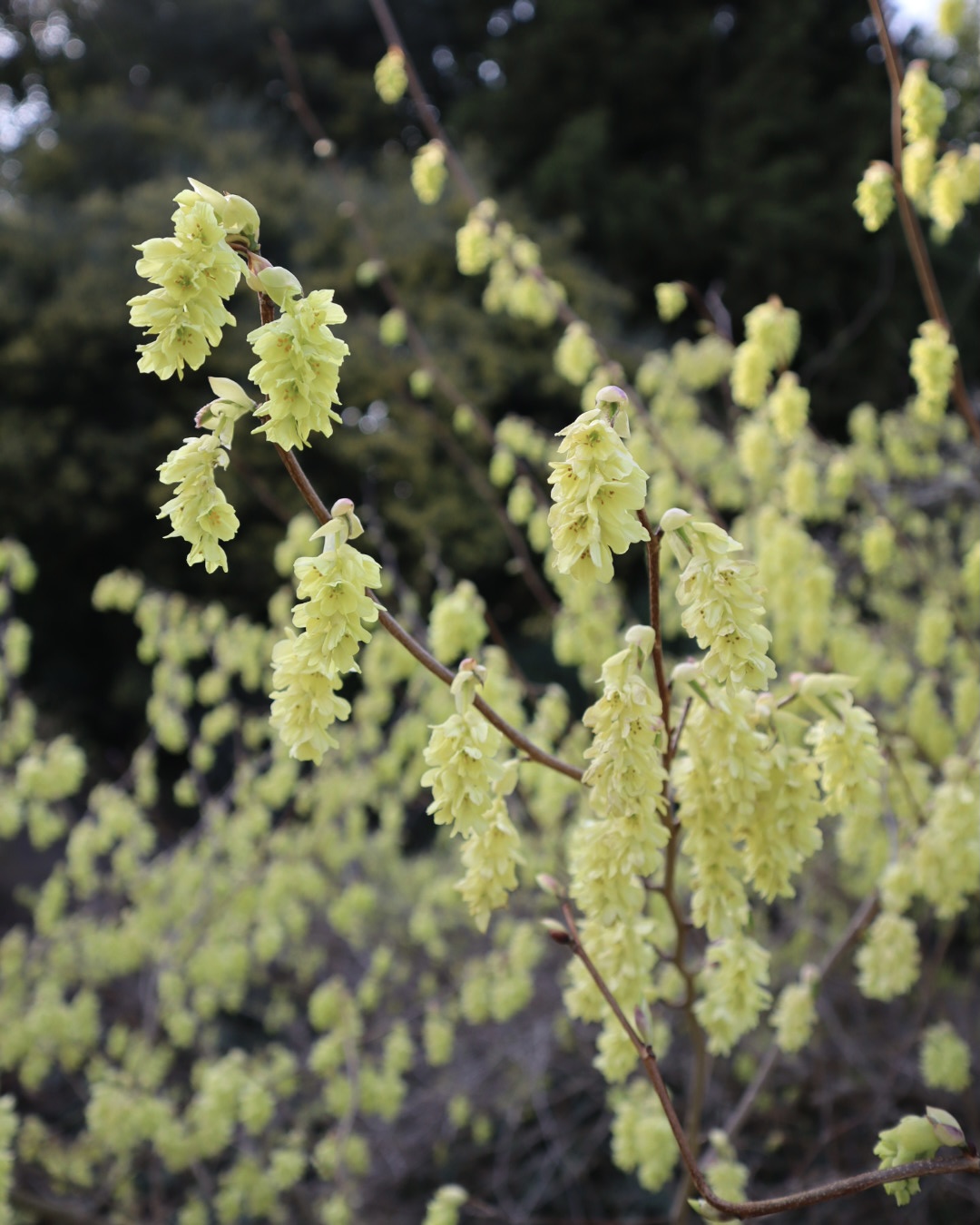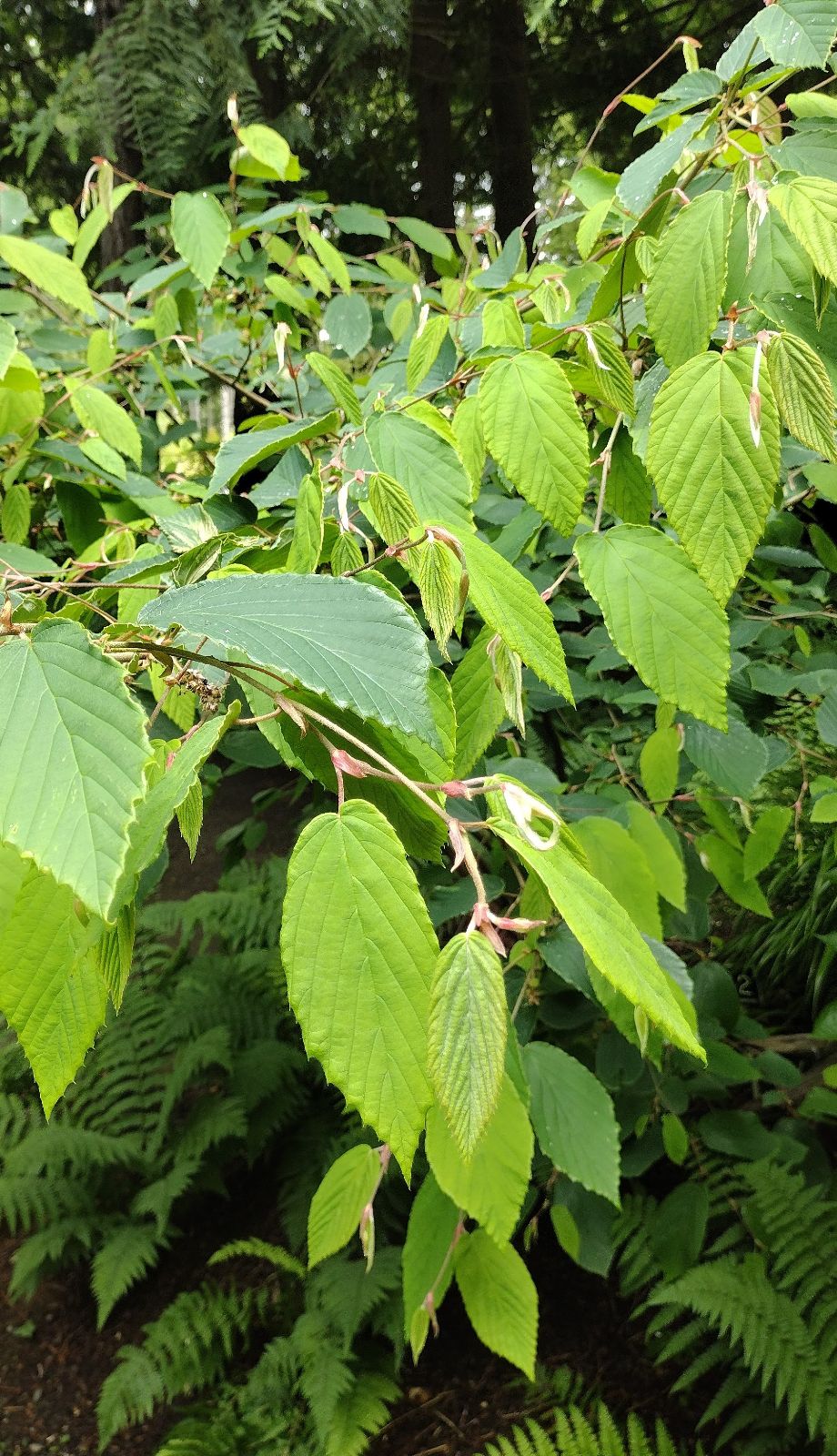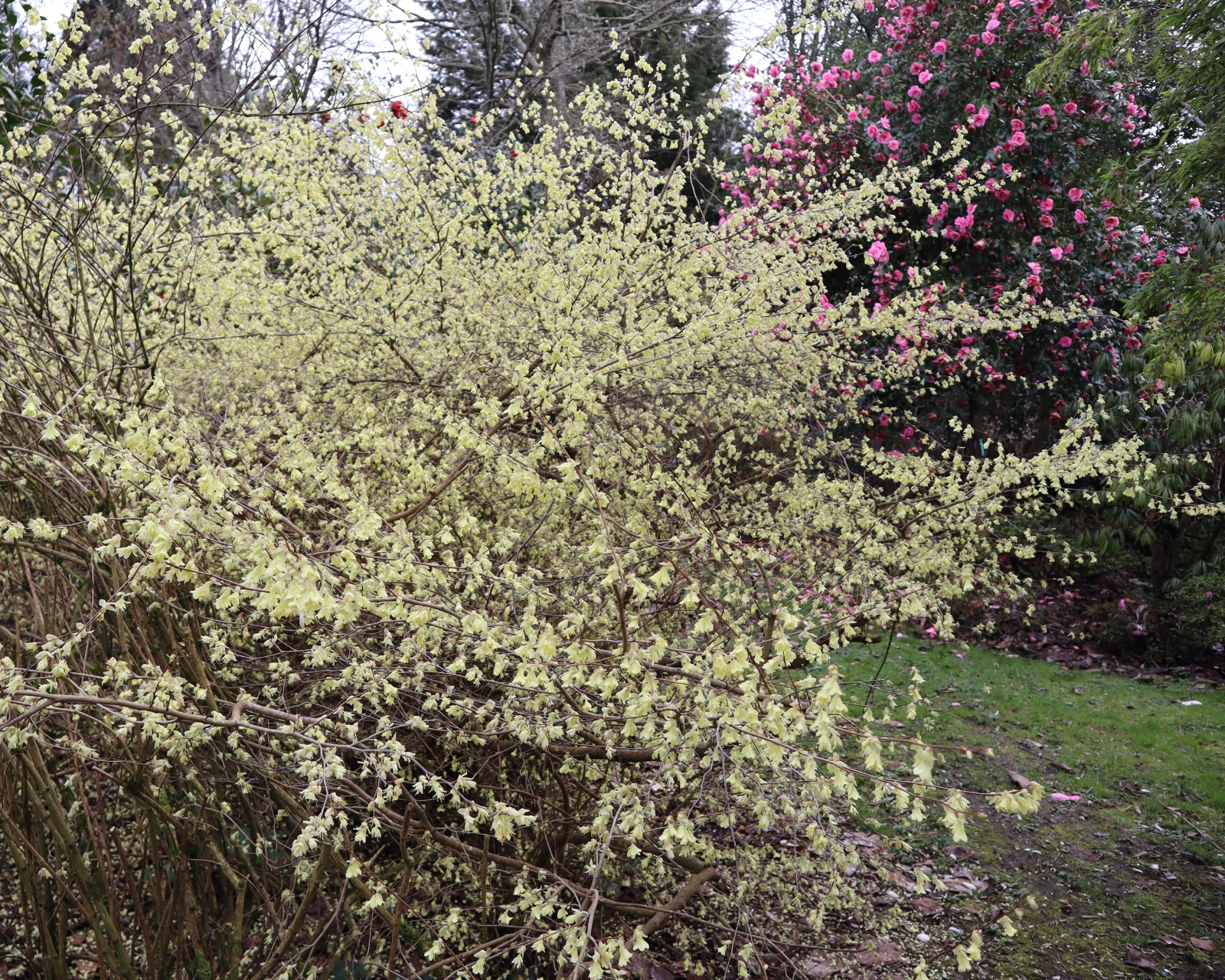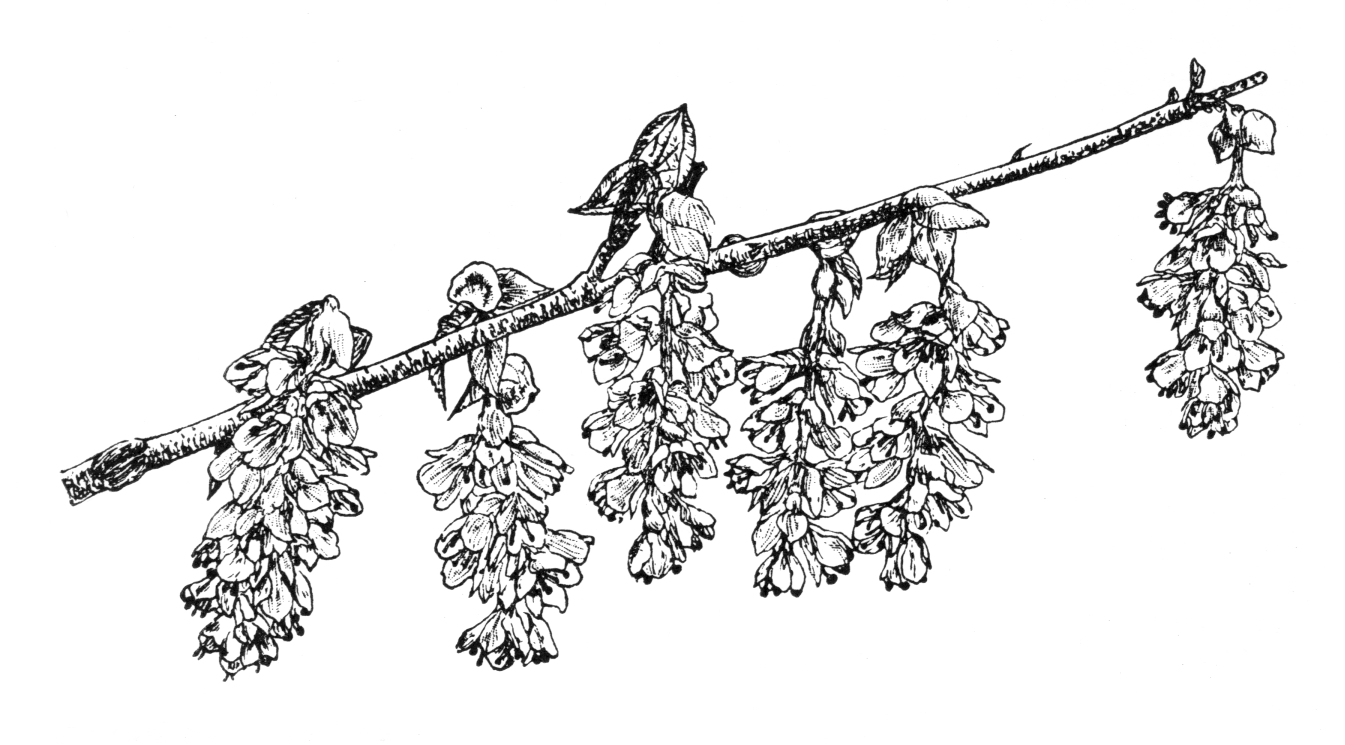Corylopsis
Credits
Article from Bean's Trees and Shrubs Hardy in the British Isles
Recommended citation
'Corylopsis' from the website Trees and Shrubs Online (treesandshrubsonline.
Family
- Hamamelidaceae
A small genus of deciduous shrubs and small trees from N.E. Asia with bristle-toothed leaves resembling those of the hazel (Corjlus), hence the name. The flowers are pale (sometimes greenish) yellow, produced on the leafless shoots in short, pendent racemes; they are usually fragrant. The parts of the flower are in fives. Leaves alternate, plaited in the bud state, veins parallel, strong, proceeding from the midrib at an acute angle. Fruit a woody capsule. From its hardy allies – Hamamelis and Parrotia – the genus is very distinct. The raceme on which the flowers are borne is really a short branch. At the base there are a few thin, membranous, bractlike organs, which are not accompanied by flowers, but from the axils of which a leaf is developed after the flowers farther along the raceme have faded. By the time the seed vessels are ripe these leaves are fully developed. Seeds in all the known species black.
As garden shrubs the species of Corylopsis are not in the very first rank; at the same time the flowers have a soft beauty of their own, and they are among the earliest to open in spring. C. spicata was the first of the genus to be introduced and the best known, but others of more recent introduction are just as hardy if properly sited, and more graceful.
From the Supplement (Vol.V)
The genus is revised by B. D. Morley and Jew-Ming Chao in Journal of the Arnold Arboretum, Vol. 58, pp. 382–415 (1977). Dr Morley summarised the conclusions reached by him and his co-author in The Garden (Journ. R.H.S.), Vol. 102, pp. 105–7 (1977). Both articles provide a key to the species recognised.

